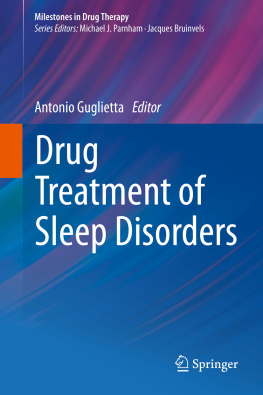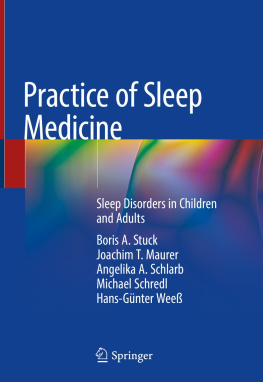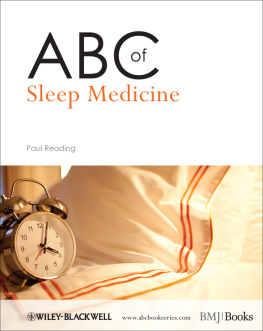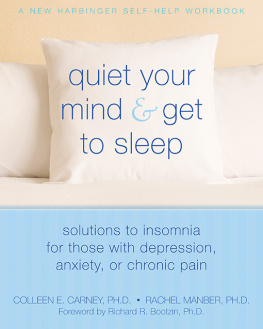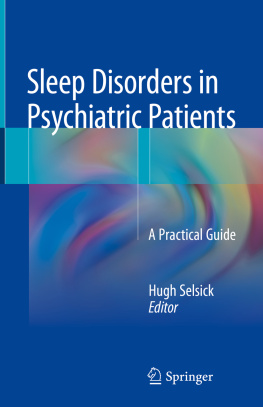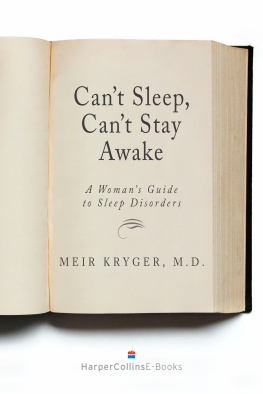1.1 What Is Sleep?
Sleep is a specific behavior, common to humans and other animals, that cyclically alternates with wakefulness and is undoubtedly fundamental for both mental and physical wellness. Everyone is aware of the importance of having a good sleep and a proper daily sleep time. Sleep quality is among the most important parameters considered for the subjective assessment of quality of life and general health status.
During sleep the body needs to acquire a typical posture; any active behavior is absent and, following a normal sleep time, there is a clear perception of bodily restoration as well as that of the mind. In fact, the strong pressure to fall asleep after either a long period of waking or a very tiring activity is a very common subjective experience. The mental activity during sleep is also quite peculiar and after the subjective experience of the loss of consciousness when falling asleep, the experience of dreaming is characteristic: a mental phenomenon that, historically, represents one of the main topics in cultures and arts.
Falling asleep is a kind of progressive reduction of the awareness of self and environment; hence, in the past, sleep was considered to be a mere passive process, in which brain activity was reduced, and even absent, compared to wakefulness (Dement ). Some clinical observations by the neurologist Constantin von Economo in 1916, as well as experimental data obtained in the 1930s by Frdric Bremer with his milestone experimental preparations on cats named cerveau isol and encphale isol, apparently supported this view. Von Economo observed that patients affected by encephalitis lethargica typically presented lesions localized at the boundary between the mesencephalon and the diencephalon, while Bremer, on the basis of his experimental results, postulated that sleep was the result of the reduction of afferent sensory stimuli to the forebrain.
In 1929, Hans Berger introduced electroencephalography (EEG) as a tool to record the cortical electrical activity from the scalp. The EEG was an amazing technical advancement in neuroscience and soon it was considered of primary importance for the investigation of the sleeping brain. In support of Bremers theory, Giuseppe Moruzzi and Horace Magoun found, in the late 1940s, that the stimulation of the pontine reticular formation induced a waking EEG in the anesthetized cat. Therefore, they suggested that the deafferentation of the sensory signals to the telencephalon was reasonably due to a transient change in the functional activity of the reticular formation (Kumar ).
Although the passive theory of sleep was the most widely accepted, some experimental results suggested that sleep was actively induced by some neural structure. Some of the patients studied by Von Economo presented an insomnia that was associated with a lesion of the anterior hypothalamus. Moreover, in the 1940s, Rudolph Hess showed that a low frequency stimulation of the thalamus could induce sleep in the cat, while Walle Nauta proposed, on the basis of brain-lesion studies in the rat, that the rostral part of the hypothalamus was the site for the capacity of sleep (Kumar ).
However, the definitive turning point leading to the concept that sleep is a state that is actively promoted by the brain was the discovery of an active sleep phase; it was in 1953 that Eugene Aserinsky and Nathaniel Kleitman described the existence of a sleep phase which cyclically interrupted the typical synchronized EEG pattern of sleep. During this phase it was possible to observe frequent eye movements under the closed eyelids and the EEG signal was desynchronized and very similar to that observed in wakefulness.
It took several years before this functional state was recognized as a distinct sleep phase. It was Michel Jouvet who, in 1959, defined this particular state as paradoxical sleep (Kumar ). REM sleep was soon considered a very peculiar sleep phase, due to the paradoxical EEG signal and the occurrence of REMs, as well as several other physiological features, such as the paralysis of anti-gravitational muscles, the occurrence of ponto-geniculo-occipital (PGO) waves, and, as firstly assessed by Pier Luigi Parmeggiani, a dramatic functional change in physiological regulation, with a large autonomic instability.
Therefore, sleep is now considered to be a complex and active behavioral state, during which the brain works differently from normal waking. Sleep cyclically alternates with wakefulness every single day and is, by itself, a cyclical process characterized by the alternation of two phases, NREM sleep and REM sleep.
1.2 Sleep Architecture
In every species studied, sleep propensity is closely related to the time of day and consequently to the circadian rest-activity cycle, and in humans, the majority of sleep time is concomitant with the nocturnal hours (Achermann and Borbly ).
During NREM sleep, the EEG becomes typically synchronized, i.e., rich in slow-frequency and high-voltage waves, in contrast to the fast-frequency and low-voltage waves of the typical waking EEG (Brown et al. ) based on the degree (intensity) of the EEG synchronization. During sleep occurrence, the NREM sleep stages and REM sleep appear in a precise order:

